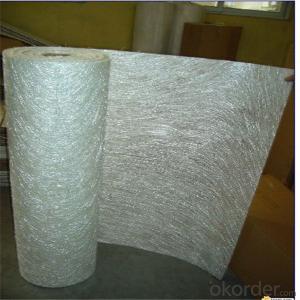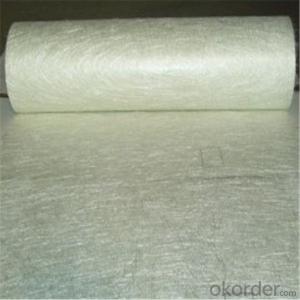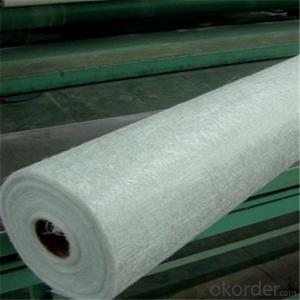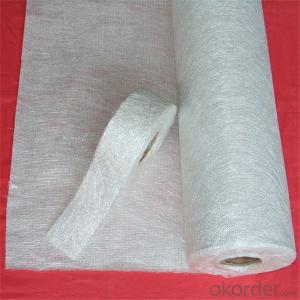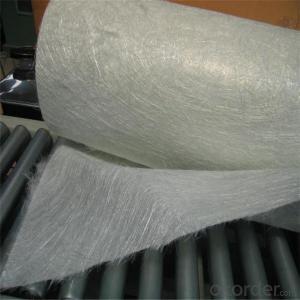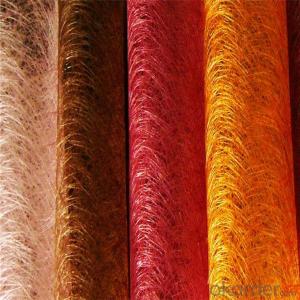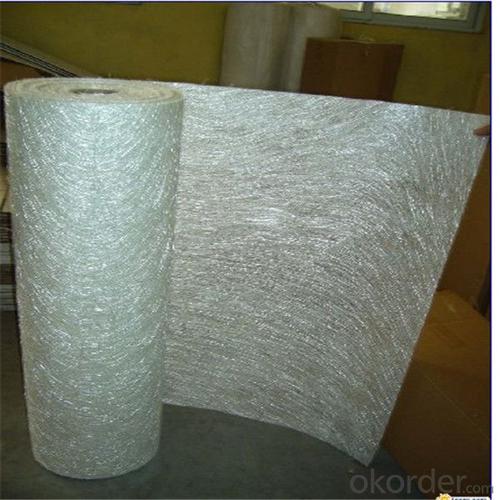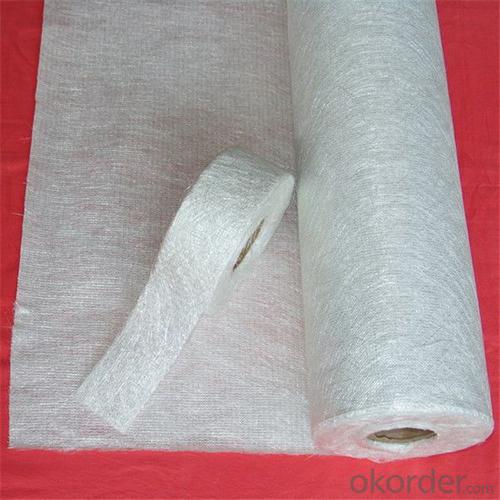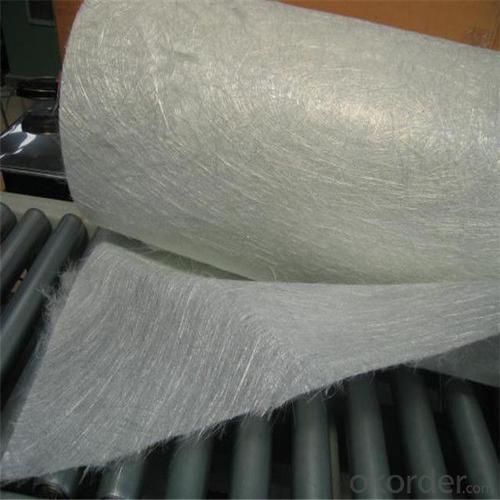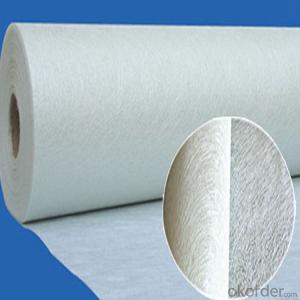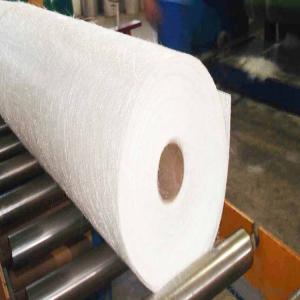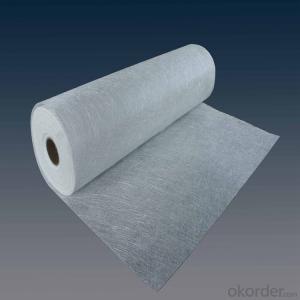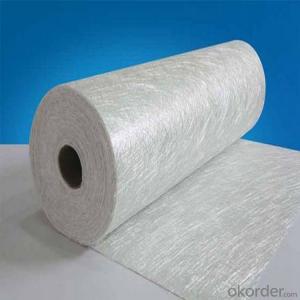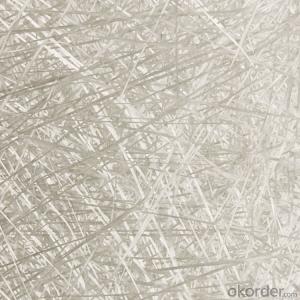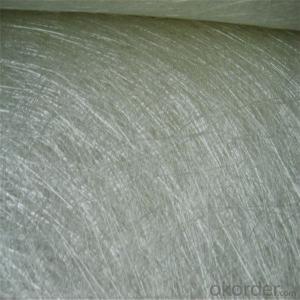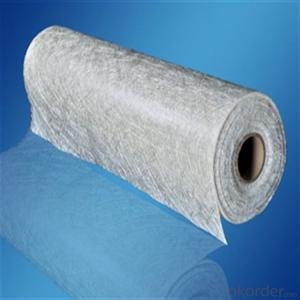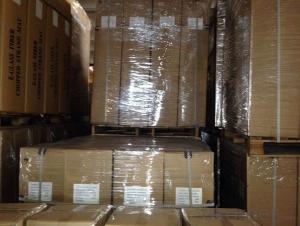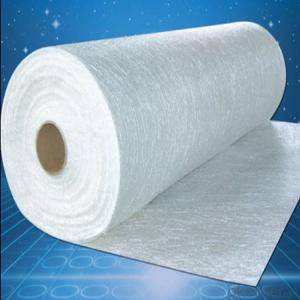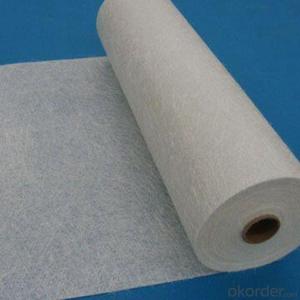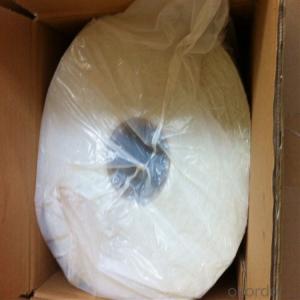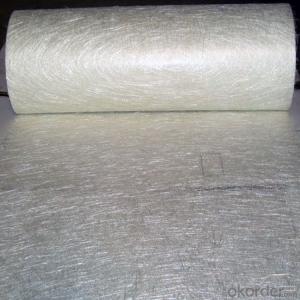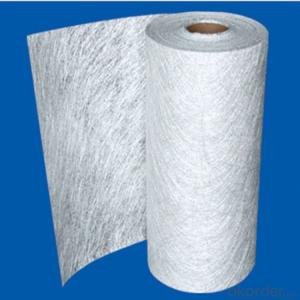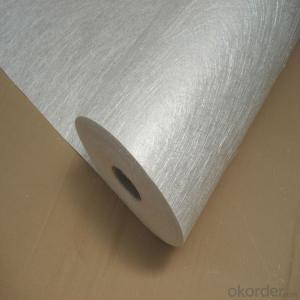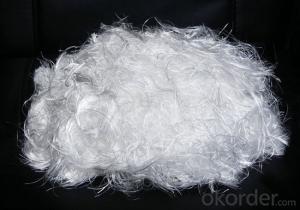Ctg Brand Fiberglass Chop Strand Mat Emulsion Binder Chopped Sand Mat in China
- Loading Port:
- Tianjin
- Payment Terms:
- TT OR LC
- Min Order Qty:
- 100 m.t.
- Supply Capability:
- 20000 m.t./month
OKorder Service Pledge
OKorder Financial Service
You Might Also Like
Quick Details
| Technique: | Chopped Strand Fiberglass Mat (CSM) | Dimensions: | according to customer's request | Mat Type: | Stitch Bonding Chop Mat |
| Fiberglass Type: | E-Glass | Softness: | middle | Place of Origin: | Jiangxi, China (Mainland) |
| Brand Name: | cnbm | Model Number: | CSMEP100,CSMEP120,CSMEP200,etc | Product: | Cooling Tower Building Glass Fiber Fiberglass Chopped Strand Mat(csm) |
| Color: | White | Width: | 1040mm,1250mm,ect. | Area weight: | 225-900g/m2 |
| Application: | filament winding,panpel,ect |
Packaging & Delivery
| Packaging Details: | Each roll in one polybag then to an export carton. |
| Delivery Detail: | Within 18 days after confirm order |
Fiberglass Chopped strand mat
Powder Strand Mats Product Features:
1) Uniform density ensures consistent fiberglass content and mechanical properties of the composites products.
2)Uniform powder distribution ensures good mat integrity, little loose fibers and small roll diameter.
3) Excellent flexibility ensures good mold ability with no spring back at sharp angles.
4)Fast and consistent wet-out speed in resins and rapid air lease reduce resin consumption and production cost and enhances productivity and mechanical properties of the end products.
5)The composite products have high dry and wet tensile strength and good transparency.
Picture
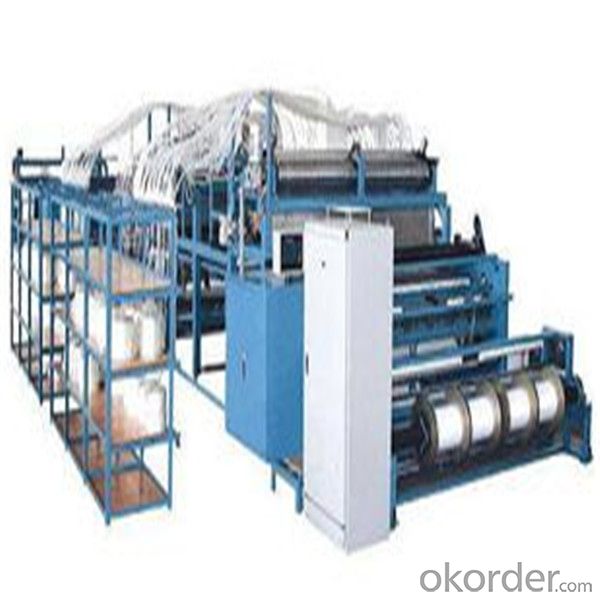
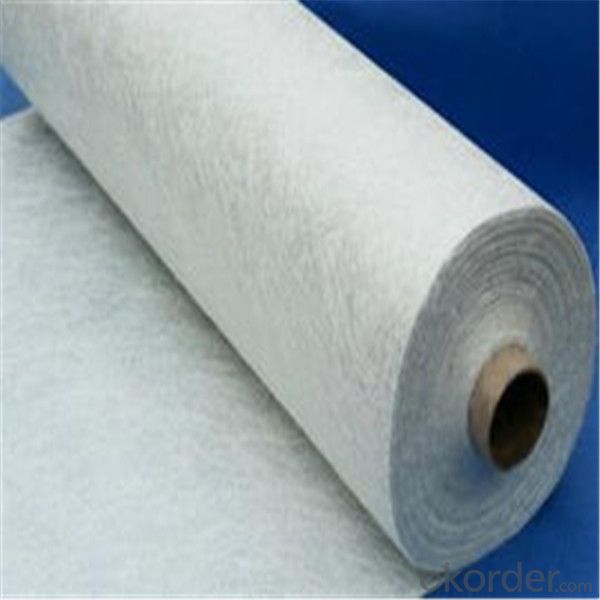
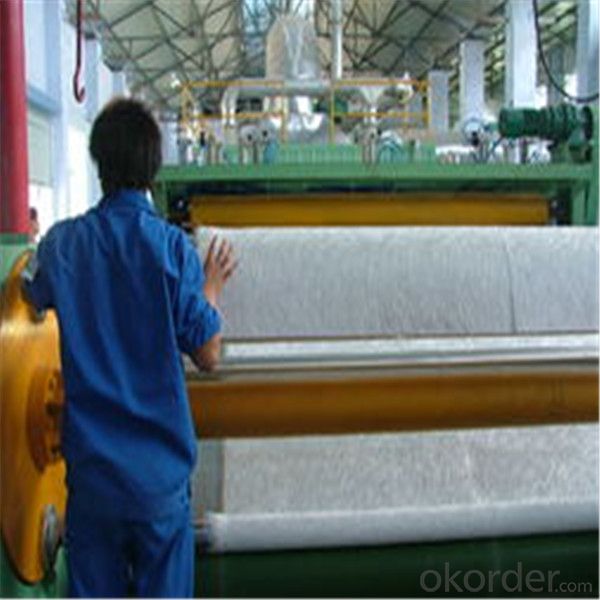
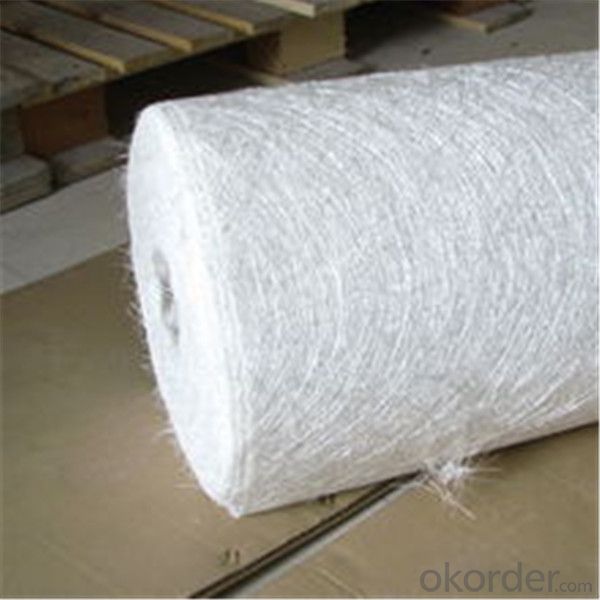
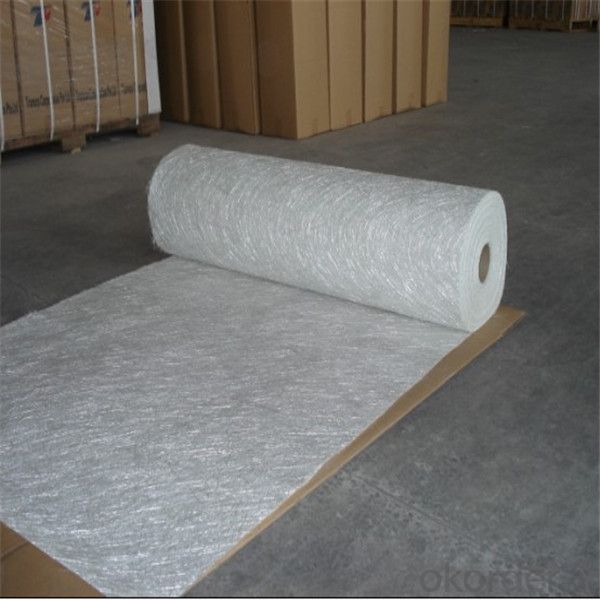
- Q: Production and process of glass fiber reinforced plastics.
- Nylon is made by the existing PU foaming material as the core material and the rudder; 6) It can realize automation to labor saving; 4) Usually, wet layer tools can be improved for the forming process.10 20, Take down the products, with roving, fiberglass surface felt. In most cases, the curing agent can be used in ambient temperature, unlike RTM aluminum which is smooth on both sides. Glass fiber roving for pultrusion has some effect in the core material. It is generally more brittle after curing: General by using multi-purpose epoxy: This method is usually adopted, because it is not harmful to health.
- Q: Can fiberglass chopped strand be used for reinforcing metal matrix composites?
- Yes, fiberglass chopped strand can be used for reinforcing metal matrix composites. Fiberglass chopped strand is made up of small glass fibers that are randomly oriented and held together with a binder. These fibers can be added to a metal matrix to increase its mechanical properties, such as strength and stiffness. The use of fiberglass chopped strand as a reinforcement in metal matrix composites offers several advantages. Firstly, fiberglass is a lightweight material, which helps to reduce the overall weight of the composite without compromising its strength. This is particularly beneficial in industries where weight reduction is critical, such as aerospace and automotive. Secondly, fiberglass chopped strand has a high tensile strength, which allows it to effectively distribute and transfer stress within the composite. This improves the composite's resistance to deformation and enhances its load-bearing capacity. Lastly, fiberglass chopped strand also provides excellent resistance to corrosion, which is essential in applications where the composite is exposed to harsh environments or chemical substances. However, it is important to note that the compatibility between the fiberglass chopped strand and the metal matrix must be considered. The metal matrix should have good wetting and adhesion properties to ensure a strong bond with the fiberglass fibers. Additionally, the composite fabrication process should be carefully optimized to achieve uniform dispersion and alignment of the fibers within the metal matrix. Overall, fiberglass chopped strand can be successfully used for reinforcing metal matrix composites, offering improved mechanical properties, weight reduction, and corrosion resistance.
- Q: Is fiberglass chopped strand suitable for automotive interior components?
- Yes, fiberglass chopped strand is suitable for automotive interior components. Fiberglass is a versatile material that offers several advantages for automotive applications. It is lightweight, strong, and has excellent dimensional stability. These properties make it a suitable choice for various interior components such as door panels, dashboards, trim panels, and seat backs. Fiberglass chopped strand is commonly used in automotive interior components due to its superior mechanical properties. The chopped strands are mixed with a resin matrix to form a composite material that can be molded into various shapes. This allows for complex designs and customization options to meet specific automotive requirements. Additionally, fiberglass is resistant to heat, chemicals, and UV radiation, which are important considerations in the automotive industry. It can withstand high temperatures without compromising its structural integrity and is resistant to fading or discoloration caused by sunlight or chemical exposure. Furthermore, fiberglass chopped strand is an economical choice for automotive interior components. It offers a cost-effective solution without compromising on quality or performance. Its durability ensures long-lasting performance, reducing the need for frequent replacements and maintenance. In conclusion, fiberglass chopped strand is indeed suitable for automotive interior components. Its lightweight, strength, dimensional stability, resistance to heat and chemicals, and cost-effectiveness make it an ideal choice for various automotive applications.
- Q: Does fiberglass chopped strand have any health hazards?
- Fiberglass chopped strand presents potential health hazards if safety precautions are not properly observed. The primary concern lies in the emission of fiberglass particles into the atmosphere, which can be inhaled and result in respiratory issues. These particles are extremely fine and can cause irritation to the skin, eyes, and lungs if adequate protective gear is not utilized. Prolonged exposure to fiberglass particles has been associated with health issues such as lung cancer, mesothelioma, and various respiratory diseases. It is important to note that the likelihood of developing these conditions is generally higher for individuals who regularly work with fiberglass, such as those in the manufacturing or construction industries. To mitigate the health risks associated with fiberglass chopped strand, it is advised to wear protective clothing, gloves, goggles, and a respirator when handling or being in proximity to fiberglass. Proper ventilation and containment measures should also be implemented to prevent the release of particles into the air. Regular cleaning and maintenance of work areas are crucial in minimizing the accumulation of fiberglass dust and debris. In conclusion, although fiberglass chopped strand does possess health hazards, these risks can be minimized by adhering to appropriate safety protocols and utilizing suitable protective equipment.
- Q: Can fiberglass chopped strand be used in construction applications?
- Yes, fiberglass chopped strand can be used in construction applications. It is commonly used in the manufacturing of various construction materials such as insulation, roofing, pipes, and panels. The chopped strands are mixed with resins and binders to create strong and durable composite materials that are lightweight, corrosion-resistant, and have excellent thermal and sound insulation properties.
- Q: How does the fiber diameter affect the properties of fiberglass chopped strand?
- The fiber diameter of fiberglass chopped strand has a significant impact on its properties. The diameter of the fibers directly affects the strength, flexibility, and overall performance of the fiberglass. A smaller fiber diameter generally results in increased strength and stiffness of the chopped strand. This is because the smaller fibers can pack closely together, increasing the overall fiber volume fraction, and thus enhancing the load-bearing capacity of the material. Additionally, smaller fibers tend to have fewer defects or imperfections, which further enhances their strength. On the other hand, larger fiber diameters may contribute to increased flexibility and impact resistance of the chopped strand. The larger fibers provide more room for movement and deformation, allowing the material to absorb and dissipate energy during impact or bending. This can be advantageous in applications where toughness and resilience are essential, such as in automotive parts or sports equipment. The fiber diameter also influences the surface area of the chopped strand. Smaller fibers have a larger surface area per unit volume, which can enhance the bonding and adhesion of the fibers with the resin matrix. This leads to improved mechanical properties, such as increased tensile strength and better resistance to delamination. Furthermore, the fiber diameter affects the processing characteristics of the chopped strand. Smaller fibers tend to disperse more easily in the resin, resulting in a more homogeneous mixture and better overall performance. On the other hand, larger fibers may require additional processing steps, such as chopping or grinding, to achieve proper dispersion and ensure uniformity in the final product. In summary, the fiber diameter of fiberglass chopped strand plays a crucial role in determining its mechanical, processing, and performance properties. The selection of the appropriate fiber diameter depends on the specific application requirements, balancing factors such as strength, flexibility, impact resistance, and processability.
- Q: Is fiberglass chopped strand easy to handle and process?
- Yes, fiberglass chopped strand is generally considered easy to handle and process. Chopped strand is made up of small, short fibers that are cut to a specified length, usually around 1-3 inches. These fibers are typically mixed with a binder or resin and then used in various applications such as reinforced plastics, composites, and insulation. One of the main advantages of fiberglass chopped strand is its versatility and ease of use. The short length of the fibers makes them easier to handle compared to longer continuous fibers. They can be easily mixed with resins or binders and then molded or formed into desired shapes. The chopped strands can also be easily dispersed into a matrix material, allowing for even distribution of the reinforcement throughout the product. Furthermore, fiberglass chopped strand offers good wet-out properties, meaning that it can easily absorb and bond with resins or other matrix materials. This ensures proper adhesion and strength in the final product. In addition to being easy to handle and process, fiberglass chopped strand also offers several other benefits. It is lightweight, strong, and resistant to corrosion, making it an ideal choice for various applications. It also provides good thermal and electrical insulation properties. Overall, fiberglass chopped strand is a convenient and efficient material to work with. Its ease of handling and processing, combined with its desirable properties, make it a popular choice in industries such as automotive, construction, and aerospace.
- Q: How does the moisture absorption of fiberglass chopped strand affect its performance?
- The performance of fiberglass chopped strand can be significantly affected by its ability to absorb moisture. Fiberglass is renowned for its exceptional strength and durability, making it a popular choice across multiple industries such as automotive, aerospace, construction, and marine. However, when fiberglass comes into contact with moisture, it undergoes a process known as hydrolysis, which weakens its structural integrity. When water or high humidity environments come into contact with fiberglass chopped strand, moisture absorption occurs. The water molecules penetrate the surface of the fiberglass and react with the resin matrix that binds the strands together. This reaction causes the resin to deteriorate, resulting in a decrease in the material's mechanical properties, including strength, stiffness, and dimensional stability. Moisture in fiberglass chopped strand also provides a conducive environment for the growth of mold, mildew, and other fungi. These microorganisms further degrade the material, causing discoloration, unpleasant odors, and potential structural damage. Moreover, the weight gain caused by moisture absorption can negatively impact the fiberglass's weight-to-strength ratio, reducing its efficiency in applications where weight reduction is crucial. Additionally, moisture absorption alters the thermal and electrical conductivity of fiberglass chopped strand. As water is an excellent conductor of heat and electricity, the presence of moisture increases the material's thermal and electrical conductivity, which may not be desirable in certain applications. To mitigate the adverse effects of moisture absorption, various measures can be implemented. One common approach is applying protective coatings or treatments to the fiberglass surface, creating a barrier against water penetration. Additionally, using hydrophobic or moisture-resistant resins during the manufacturing process helps minimize the rate of moisture absorption. In conclusion, moisture absorption significantly impacts the performance of fiberglass chopped strand. It diminishes mechanical properties, fosters the growth of microorganisms, increases weight, and alters thermal and electrical conductivity. Implementing appropriate measures to minimize moisture absorption is crucial to ensure optimal performance and longevity in various applications of fiberglass chopped strand.
- Q: Is fiberglass chopped strand compatible with different curing methods?
- Yes, fiberglass chopped strand is compatible with different curing methods. Fiberglass chopped strand is commonly used as a reinforcement material in various industries such as automotive, construction, and aerospace. It can be used in conjunction with different curing methods, including thermosetting and thermoplastic processes. In thermosetting processes, such as resin transfer molding (RTM) or vacuum infusion, the fiberglass chopped strand is typically impregnated with a thermosetting resin, which is then cured at elevated temperatures. The resin undergoes a chemical reaction, resulting in a hardened and durable composite material. Fiberglass chopped strand is compatible with these processes as it provides strength and reinforcement to the cured composite. In thermoplastic processes, such as injection molding or compression molding, the fiberglass chopped strand is mixed with a molten thermoplastic resin, which solidifies upon cooling. The chopped strand reinforcement enhances the mechanical properties of the thermoplastic material, making it stronger and more resistant to deformation. Fiberglass chopped strand is compatible with these processes as it can be easily incorporated into the molten resin and distributed evenly throughout the molded part. Overall, fiberglass chopped strand is a versatile material that can be used with different curing methods, providing enhanced strength and durability to the final product. Its compatibility with various processes makes it a preferred choice in industries where high-performance composites are required.
- Q: Does fiberglass chopped strand improve the fatigue resistance of composite materials?
- Yes, fiberglass chopped strand can improve the fatigue resistance of composite materials. The use of chopped strands helps to distribute stress and reinforce the composite matrix, enhancing its ability to withstand cyclic loading and reducing the likelihood of material failure due to fatigue.
Send your message to us
Ctg Brand Fiberglass Chop Strand Mat Emulsion Binder Chopped Sand Mat in China
- Loading Port:
- Tianjin
- Payment Terms:
- TT OR LC
- Min Order Qty:
- 100 m.t.
- Supply Capability:
- 20000 m.t./month
OKorder Service Pledge
OKorder Financial Service
Similar products
Hot products
Hot Searches
Related keywords
